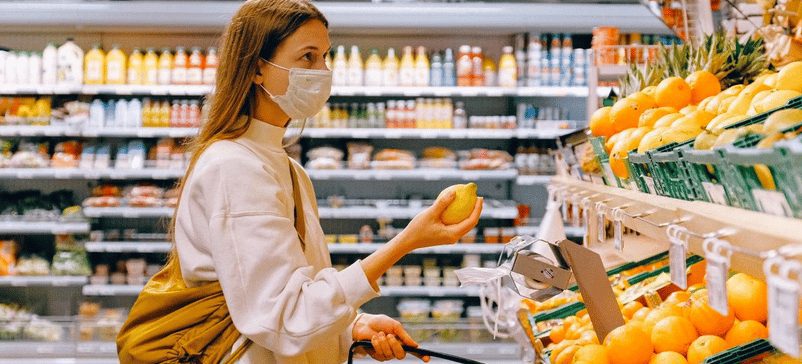Source: Wandile Sihlobo, Business Day on 21 January 2021, photo credit: Anna Shvets, Pexels/iPolitics
Higher grain prices and a decline in cattle slaughtering activity over the past few months have started to transmit into the prices of products consumers pay when doing their grocery shopping.In the fourth quarter of 2020, SA’s food price inflation was on an upwards trajectory, with the December print accelerating to 6.2% year-on-year, from 5.9% year-on-year in the previous month.
This is the highest rate since July 2017, when food price inflation was at 6.8% year-on-year.SA’s food price inflation averaged 4.8% in 2020, up from 3.1% year-on-year in 2019. These are still relatively comfortable levels compared with the drought-related surge of 2016, where SA’s food price inflation averaged 10.8% year-on-year.
The drivers of the increase in the headline food price inflation in the last quarter of the year were primarily bread and cereals; meat; fish; milk, eggs and cheese; and oils and fats.In the case of “bread and cereals” — which consists mainly of essential products and with a weighting of 21% in the food basket — the driver of acceleration in price inflation is the higher grains prices.
While SA had its second-largest grains harvest in history in the 2019/2020 production season, and ordinarily one would have expected prices to soften, we have in fact experienced the opposite.Grains prices remained elevated on the back of strong demand for SA maize across the rest of the Southern Africa region and the Far East markets.
The weaker domestic currency also added to the price increase, along with spillovers from higher global grains prices. The global grains market was primarily driven by the growing demand for grains in China. But most recently, La Nina-induced dryness in parts of Argentina and Brazil continues to support prices.
Meat, which is also an essential product in the food basket, with a 35% weighting, saw prices increasing due to various factors. Chief among them was the progressive decline in slaughtering numbers towards the end of 2020. In October 2020, sheep and cattle slaughtering was down by 22% year-on-year and 2% year-on-year, respectively.For milk products price, there was also a seasonality factor; whereas the fats and oil prices were, in part, underpinned by the weaker domestic currency.
SA remains a net importer of vegetable oils.Now, this is all history, and the critical question is whether this upward swing in food prices could become a prolonged trend for much of this year? I don’t think so.
First, while La Nina causes dryness in South America (with a negative impact on crops), Southern Africa is the opposite. We have been receiving higher-than-usual rainfall that has boosted crop conditions, not only in SA but across Southern Africa.
This means there are expectations of a good harvest in Southern Africa.For SA, my preliminary estimates are that we could have a maize harvest of at least 16.0 million tonnes, which would overtake the 2019/2020 season’s harvest of 15.4 million tonnes and be the second largest on record (against an annual consumption of 11.4 million tonnes).
Under this scenario, and improved crop harvest across Southern Africa, we could see the demand that existed in the 2019/2020 crop declining, thus taking some pressure off domestic crop prices. All else being equal, I think SA’s grains prices could soften from around the end of February 2021, from the current highs of over R3,500 a tonne.
On meat, slaughtering could slightly improve in 2021 and the base effects on poultry meats, which increased in 2020 partly as a result of an import tariff hike, could also bode well for food price inflation.
However, I am less optimistic about fats; the relatively weaker domestic currency and elevated global vegetable oil could mean that oils and fats price inflation could be slightly elevated for some time.
In terms of fruits and vegetables, the good rains across the country could boost supplies and keep prices broadly steady.
Against this backdrop, I believe SA’s food price inflation could remain elevated in the first quarter of 2021, primarily underpinned by bread and cereals products (the pass-through of current higher grains prices will persist for the first quarter). But from the second quarter, we could see food price inflation decelerating somewhat. My baseline forecast is for food price inflation to average around 5% year-on-year in 2021.
The South African Pork Producers’ Organisation (SAPPO) coordinates industry interventions and collaboratively manages risks in the value chain to enable the sustainability and profitability of pork producers in South Africa.
















